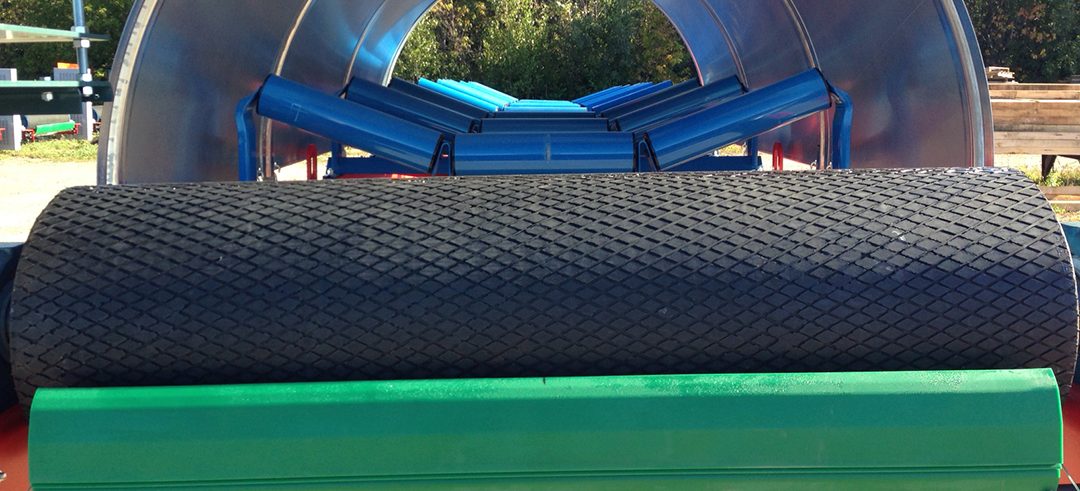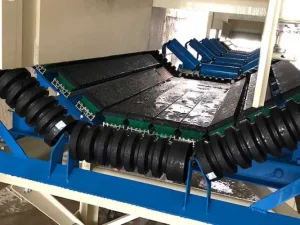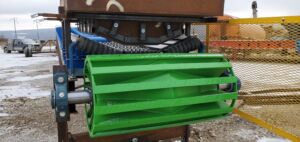The function of conveyor pulley lagging is to increase friction with the industrial conveyor belt while protecting the shell from damage. There are several types of pulley lagging, including rubber and ceramic lagging.
Each specific type of pulley lagging has different specifications and purposes which we go into more detail in this article. The ideal type of pulley lagging is highly dependent on the design and application of the conveyor.
Rubber Lagging
Rubber is the most common type of pulley lagging as it is one of the most affordable conveyor component options. Rubber is a versatile material that varies in thickness, hardness and type of grooves. The two main types of rubber lagging are:
• Plain Rubber Lagging for non-drive pulleys provide better traction for a heavy industry conveyor belt. One of the benefits of this option is that it won’t excessively increase the friction that could cause the belt to wear faster.
• Diamond/Herringbone/Chevron Grooved Rubber Lagging is ideal for pulleys that require more friction on the industrial conveyor belt. The diamond grooves on rubber provide added flexibility to move and bend with the conveyor belt. Another advantage of diamond grooved rubber lagging is that it sheds water off the pulley to prevent slippage.
Ceramic Lagging
Ceramic lagging is commonly used for harsh environments where long service life and the use of durable materials on conveyor components are a necessity. There are two types of ceramic lagging options:
• Dimple Ceramic Lagging – The dimples in this type of lagging adds significantly more friction and grip compared to other materials. The dimples press into the belt, assisting in driving the conveyor efficiently. The amount of ceramic coverage selected will depend on the amount of friction and grip required for your application.
• Smooth Ceramic Lagging is typically used with non-drive pulleys and offers a middle ground between dimple ceramic lagging and rubber lagging.
The Importance of Pulley Lagging
Selecting the correct pulley lagging will increase the friction, preventing the belt from slipping. This helps to increase the life of your belt, especially for applications that require high rotation speeds. Quality conveyor components are an investment to your business, as it reduces the wear on equipment and maximizes the value of your application.




